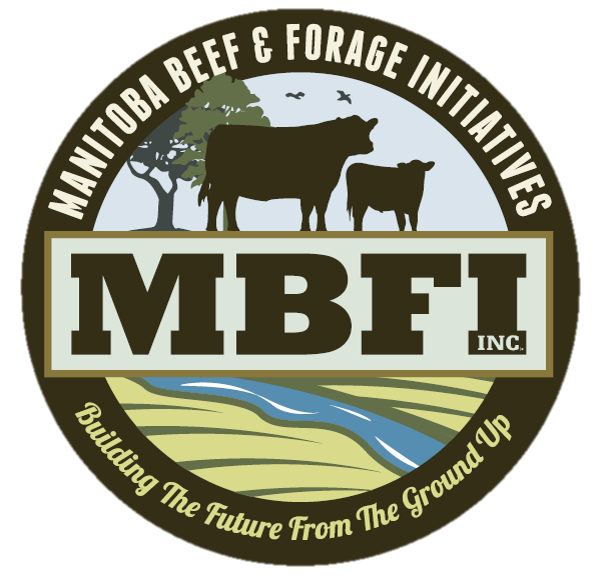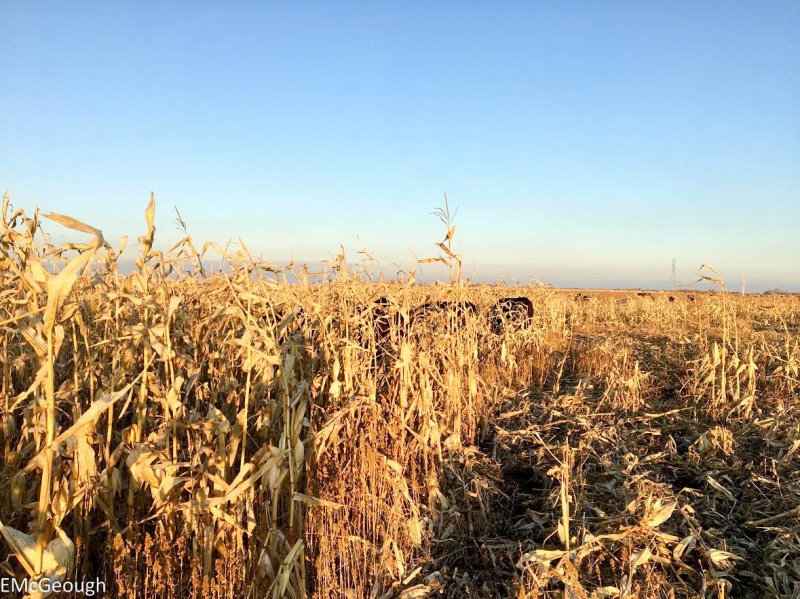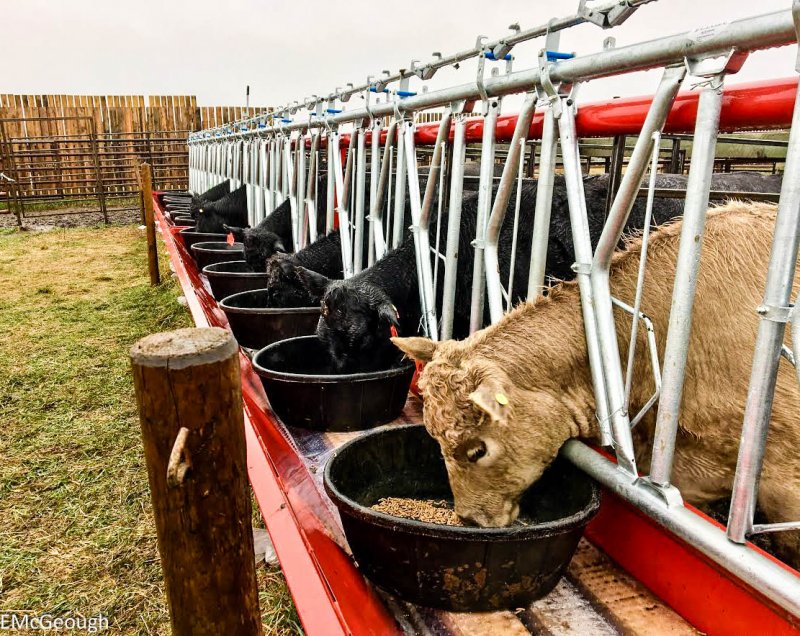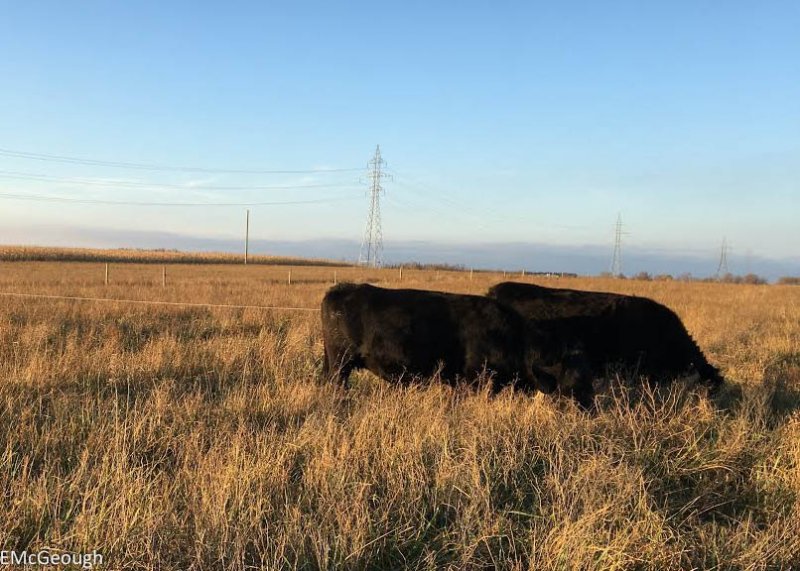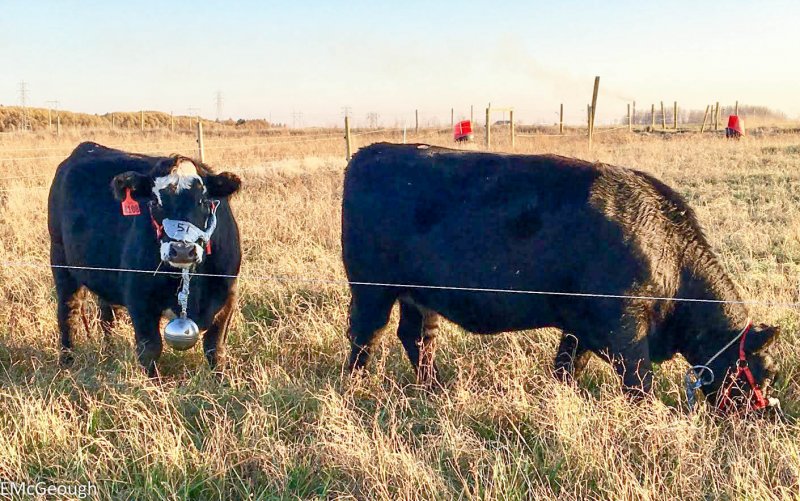Back to Research & Demonstration
Evaluation of annual and perennial forage species for stock pile grazing in beef cattle
Project Details
Project Lead: Emma McGeough (University of Manitoba), Kim Ominski (University of Manitoba)
Collaborators: Karin Wittenberg, Doug Cattani and Derek Brewin (University of Manitoba), Paul Jefferson (Western Beef Development Centre, Formerly)
Years: 2016
Project Status: Complete
Funding & In-Kind Support: Beef Cattle Research Council, Manitoba Beef & Forage Initiatives, Agriculture and Agri-Food Canada - Brandon Research and Development Centre, Manitoba Agriculture
Location: Johnson Farm
Scope: Research
Keywords: Perennial Forages, Annual Forages, Livestock Nutrition, Livestock Performance, Grazing Management
Approach
This project evaluated:
Annual and perennial forage mixtures for their potential as stockpiled forages for overwintered beef cattle. Forages grazed included the following:
i) Courtney tall fescue (T)/Fleet meadow bromegrass (M)/Yellowhead alfalfa (A; TAM);
ii) Killarney orchardgrass (OG)/Algonquin alfalfa (A; OGA);
iii) Courtney tall fescue/Algonquin alfalfa/Oxley II cicer milkvetch (C; TAC);
iv) Fusion corn (COR)
- Beef heifer performance, feed intake, energetics, and grazing behavior during stockpiled forage grazing (2 x 28 day periods) in late fall/early winter
Key Findings
Forage biomass yield in pastures of COR (6,342 kg DM ha-1) was 68%, 79% and 57% higher than OGA, TAC, and TAM, respectively, which did not differ from each other.
Crude protein was highest in TAC (10.29%) and COR was the lowest (6.87%). However, COR had the highest in TDN (72.14%) compared to the perennial forage treatments.
All heifers gained weight in Period 1 (1.36 kg/d) suggesting that all treatments could be successfully stockpile grazed in the late fall. When temperature fell to -18°C in Period 2, all heifers lost weight and those grazing perennial pastures spent more time (30-54% of the day) near windbreak shelters. Heifers grazing COR spent only 7% of the day near shelter, suggesting COR provided adequate shelter.
TAC was identified as the superior perennial forage treatment for stockpile grazing, based on higher CP and lower NDF compared to OGA and TAM, as well as improved ADG compared to OGA and numerically higher ADG compared to TAM.
Although COR had increased yield and TDN with lower CP compared to TAC, ADG was comparable between the two treatments. Nonetheless, weight loss in Period 2 indicated that all treatments required supplementation when temperatures were below -18°C.
For More Information:
Evaluating forage species for stockpiled forages - BCRC factsheet
Forage quality, animal performance and behaviour of bred beef heifers grazing stockpiled perennial and annual forages in the late fall/early winter in Manitoba - Jordan Dickson, University of Manitoba M.Sc. Thesis
National Centre for Livestock and the Environment - University of Manitoba
Related Projects at MBFI:
Industry Resources:
Feed Quality of Stockpiled Forage - Manitoba Agriculture
